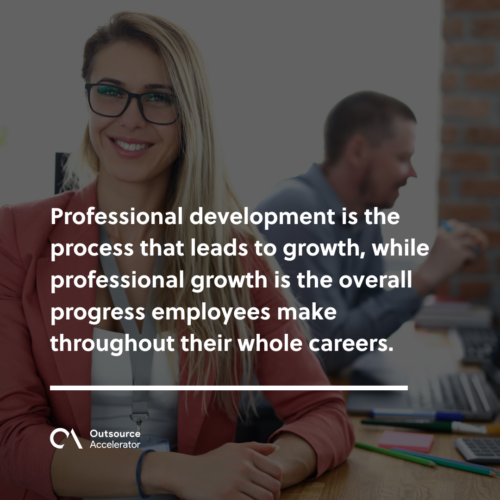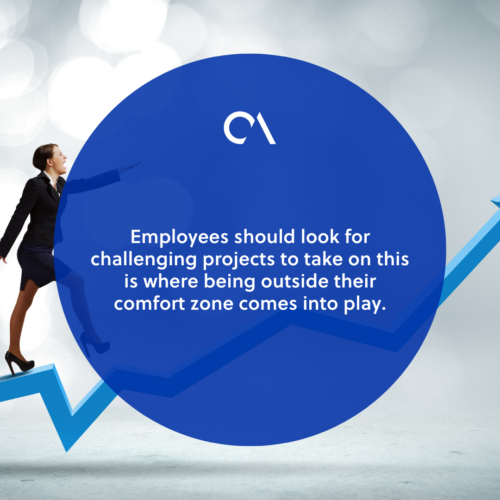How to build a positive professional growth culture in the workplace

Employees want meaningful work. They want something that challenges them and makes them want to learn and contribute to the company. This is why employers should encourage their workforce to upskill and further their professional growth.
Professional growth does not benefit the employee alone; this is the symbiotic nature of employment. It makes employees happy to have the freedom to make decisions for themselves.
Fulfilled employees help employers build a skilled and dedicated team. A contented workforce leads to a mutually beneficial relationship, helping build a healthy work environment.
What is professional growth?
Professional growth is learning new skills and developing talents to achieve better work outcomes. Understanding professional growth can help employees welcome more opportunities, career satisfaction, and higher salaries.
Most employees want to achieve career success. To help with this, companies must build up their employees’ skills to keep up with today’s competitive employment landscape.

Professional growth vs. professional development
Many people interchange professional growth with professional development. In reality, one concept is a product of the other one.
Professional development is the process that leads to growth. It is the tangible steps that employees take to be better equipped to handle their roles.
Training, mentoring, education, and certifications are part of the professional development process. Although the employees have the talent and skills to do their job, they need additional credentials and training to stay competitive and become more efficient.
On the other hand, professional growth refers to the bigger picture. It is the overall progress employees make throughout their whole careers.
Some examples of professional growth are managing more people, handling a bigger budget, or leading a large project. The environment and available opportunities have huge impacts on one’s professional growth.
To make it easier to understand, remember that development is the input, while professional growth is the output. The more employees take charge of their professional development, the more influence it has on their professional growth.

5 strategies to grow professionally in the workplace
How can employees boost their professional growth? These five strategies can help create the path toward a booming professional career.
1. Look for new opportunities.
Employees should look for challenging projects to take on. This is where being outside their comfort zone comes into play.
Taking on unfamiliar territory might be scary at first, but it is where employees can learn. Trying new things can help them upskill and unleash their full potential.
Employees should not wait for opportunities – they need to create them.
2. Always be on time
Most employees struggle with being on time. They do not consider punctuality necessary to help them grow professionally. Little do they know that it is a soft skill that most employers demand.
Being late can negatively affect the whole team. It can slow down operations and cause delays. Learning how to value another person’s time is a flex.
3. Know the boundaries between work and life
Knowing the importance of work-life balance is essential to achieve professional growth.
Creating this balanced lifestyle requires employees to take control of their career paths and prioritize what is essential. For instance, personal problems should not affect work, and vice versa.
However, drawing a line between these two areas can sometimes take work. There should always be room to breathe.
4. Attend relevant seminars and conferences
Employers should attend conferences and events to learn the industry’s latest updates and best practices. Since most industries are ever-changing and fast-paced, employees need to stay on top of their game.
Aside from keeping up with the latest trends, these conferences are the perfect avenue for employees to work on their network connections.
5. Improve communication skills
Effectively conversing with others is another crucial soft skill that can help employees succeed in the workplace. People should know that there is more to communication – and it is not only about speaking or emailing.
Effective communication also includes the ability to listen and collaborate actively. Thus, employees should demonstrate good communication skills, including non-verbal ones. Communication skills can also be strengthened through training and courses.

Prioritizing professional growth for career advancement
Employees need purposeful steps to advance in their careers. Professional growth does not happen overnight. It is a continuous learning process that requires patience, long-term struggles, and discipline.
By then, there is still a lot to learn. But here is the fun thing: Learning never stops. Every taken challenge and new experience is a step closer to growing personally and professionally.







 Independent
Independent




